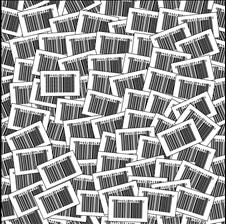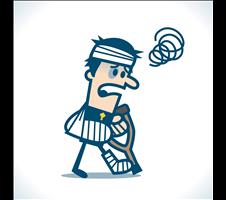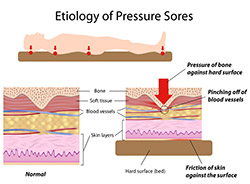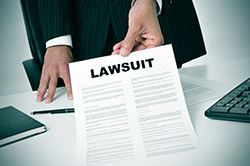|
|
Personal Injury
Monday, June 12, 2017

If you were injured in an accident, it may be possible to hold another individual accountable by pursuing a personal injury lawsuit. In some cases, however, more than one person may be responsible for your injuries. In these circumstances you may still be compensated under the doctrine of comparative fault: the allocation of responsibility under the theories of contributory and comparative negligence.
Contributory Negligence
In the few states that still rely on the contributory negligence approach, individuals have a duty to act reasonably and not put one's self at risk of injury. This means that if a plaintiff is even partially responsible for the accident, he or she may be barred from recovering damages. This often leads to unfair outcomes because plaintiffs are punished for having any degree of fault.
Comparative Negligence
Today, most states have adopted the comparative negligence approach which allows a plaintiff to recover damages even if he or she is partially at fault for the accident. There are three types of comparative negligence: pure, modified and slight/gross comparative negligence.
Under the pure comparative negligence approach, the plaintiff's damages are reduced by the percentage of his or her fault. A more common approach is modified comparative negligence in which the plaintiff cannot recover damages if he or she is equally or more responsible for the damages. This means that the plaintiff cannot be more than 50 percent (51 percent in some states) at fault in order to recover damages. Lastly, under the slight/gross comparative negligence approach, the plaintiff will only recover damages if he or she is slightly at fault.
The Takeaway
Ultimately, comparative negligence claims lead to more just results since all of the parties involved are allocated a percentage of fault, allowing the plaintiff to be made whole for his or her injuries. Although most states have adopted this approach, proving negligence can still be complicated, and it is crucial to know which theory applies in your state. For this reason, if you are injured in an accident, you should speak to an experienced personal injury attorney today.
Monday, March 13, 2017

Many individuals mistakenly believe that they cannot sue city hall, but this is not the case. Under the doctrine of sovereign immunity, town, city, county and state governments were once protected from most lawsuits. Today, those rules have been scaled back to some extent, and the government can be held responsible for personal injuries and property damage or unlawful conduct. Let's take a look at personal injury and other lawsuits that can be brought against government entities.
There are a number of ways the government can be held liable for accidents and injuries. For example an individual who is injured in a slip and fall accident at a government office or facility may have grounds for a premises liability lawsuit. Similarly, a motorist or passenger who is injured in an accident with a government owned truck or car, or a motor vehicle being driven by a government employee or contractor while conducting official business, can bring a personal injury lawsuit.
In an addition, an employment lawsuit can be brought by a government employee for harassment, discrimination or wrongful termination against his or her government employer. Finally, law enforcement agencies can be sued for a wide range of civil rights violations.
In short, there are a number of legal claims that can be brought against the government. It is important to note that there are differences between suing the government and suing a private person or business.
For example, the time period to bring a personal injury claim against the government , referred to as the statute of limitations, is typically much shorter. Further, before filing a lawsuit, it is also necessary to provide a Notice of Claim to the government, agency, or employee within a set time period notifying them that a lawsuit will be brought. Lastly, many states require individuals to file an administrative claim with a government agency before filing a civil case in court.
In the end, it is possible to sue city hall, so to speak, but there are a number of hurdles that need to be crossed. Moreover, some governments may still be immune from certain injury claims, depending on the state in which you live. If you were injured due to the negligent or illegal conduct of a government entity or employee, you should speak to an experienced attorney.
Monday, January 16, 2017

If you or a loved one is injured in an accident you may be entitled to compensation which usually means dealing with an insurance company. Although insurers have an advantage because they have teams of attorneys and experts, the law requires insurance companies to treat claimants and policyholders fairly. While there may be legitimate reasons to deny a claim, an insurer that fails to engage in good faith and fair dealing may be held liable for bad faith.
What is bad faith?
Bad faith is a legal term for an insurer denying a claim without a reasonable basis. In first party insurance situations, bad faith arises when an insurance company denies a claim without a valid reason.
Read more . . .
Monday, November 14, 2016

If an individual is harmed by a purchased device or product, damages may be recovered under strict product liability. The plaintiff, however, must be able to prove several things in order to prevail in suit against a distributor, manufacturer, or retailer. Generally, the product must have been “in an unreasonably dangerous condition” at the time of sale and intended to reach the consumer without any alteration. Moreover, the injury suffered must be a direct result of the flawed product itself.
Defects are not all created equal. A plaintiff may bring a cause of action for either a manufacturing or design defect. Generally speaking, in cases involving a “manufacturing defect” only some products in the line of distribution will have been affected. The defect, for example, may have resulted from a malfunction in factory production. A design defect, on the other hand, which is integral to the product's structure, usually affects the entire line of the inventory, making each device dangerously defective.
Product liability can also be proven if a manufacturer does not provide adequate warning regarding a product's use. If the risk posed to the consumer is not patently obvious, the manufacturer is required to provide an understandable notice of warning to the customer. For an injured individual to win such a case, his or her injury must have resulted from the lack of warning or direction that could have prevented the injury sustained.
If a plaintiff's injury results from that person's misuse of the product or his or her own negligence, that individual cannot prevail under the theory that the design or manufacture of the product was defective.
If an individual has been injured by a defective product, or because there was no evident warning of some dangerous aspect of the product's assemblage or use, a case of product liability may be brought. When considering whether to file a product liability lawsuit, an attorney specializing in the field should be consulted to assess whether the injured party has a viable case.
Thursday, September 15, 2016

A landowner owes a duty of care to everyone who enters his or her property, regardless of whether that person is a trespasser, a licensee, or an invitee. This article is a discussion of the standard of care a homeowner must take for a person who has no permission to be on his or her property. It may not seem intuitive, but a person can be held responsible for injuries suffered by an intruder.
A homeowner is not permitted to set up dangerous traps for an intruder. A spring loaded gun set to fire on an intruder who opens a door is an example of such a trap. Burying landmines in the front lawn can lead to serious liability issues. Although these are extreme examples, any sort of trap set to purposely injure a potential trespasser is not permitted. The legal system does not tolerate violent self help as a means of protecting one’s land from criminal activity.
In some situations a homeowner may have a duty to warn a trespasser of potentially dangerous conditions. If a large hole exists on a property that is not obvious to a passerby, it may be a good idea to put up a sign letting people know of the hole’s existence. A sign in a window reading “beware of dog” can protect a landowner from liability if that dog mauls an intruder. It can also act as a deterrent, keeping would be thieves looking for another house to rob.
The most common way a homeowner is responsible for an intruder’s injuries is if their home contains an attractive nuisance. This is a potentially dangerous condition that may seem particularly inviting to trespassers. Trampolines, swimming pools, and swing sets can attract children onto a person’s property without invitation. Landowners must be aware that children who get hurt while playing on their property can sue for their injuries, even if they never had permission to be on the property. Even an empty pool can attract skateboarders participating in an inherently dangerous activity, creating liability for a homeowner. The best way to protect oneself from this liability is to build a tall fence to make it impossible for small children to trespass and to make it clear to older children that their presence is unwelcome.
Friday, June 17, 2016

“Burden of proof” refers to the requirement that a plaintiff must demonstrate to prevail in a lawsuit. In a criminal case, the burden of proof is “beyond a reasonable doubt,” meaning that the prosecutor must prove that a defendant is guilty to a degree that a reasonable person would not hesitate to think he or she committed the crime.
In any civil case, however, the burden of proof is much easier to meet. In a personal injury lawsuit, the plaintiff must prove the facts in his or her favor by a preponderance of the evidence. This means that if the weight of the evidence is on one side, that side wins the case. It is a simple comparison. This is the reason why a person could be found not guilty of committing a crime, but still be held financially responsible for that crime. There are well known examples of cases in which those accused of murder won an acquittal in criminal court. When the victim’s families filed civil suits for wrongful death, however, the defendants were found liable. Even though the evidence presented in the criminal trials did not prove the defendants' guilt beyond a reasonable doubt, the preponderance of the evidence in the civil cases proved sufficient.
In every case, there are different elements that all must be proven by a preponderance of the evidence. For example, in a case for which a plaintiff claims that someone else’s negligence caused them an injury, that plaintiff must prove four separate elements. First, he or she must show that the defendant owed a duty to the plaintiff, second, that the duty was breached, third, that the plaintiff suffered an injury, and finally, that the defendant’s breach was the proximate cause of his or her injury. When there is a motor vehicle accident, the defendant’s duty is to follow the rules of the road and to drive safely. It is breached when the defendant fails to do so. A plaintiff also has to prove that he or she suffered real injuries and that those injuries are the result of the car accident. Without having proved all the elements of the case by a preponderance of the evidence, a jury will find against a plaintiff.
Wednesday, April 13, 2016
 A person who has a pool, trampoline, swing set, or other similar structure in their yard is usually required, by their homeowner’s insurance, if not by law, to also have a fence. This is because these structures are seen by the law as attractive nuisances. This means that a child who sees a such structures, and who may not appreciate the danger they present, is likely to trespass on the property to play in, on, or with them and injure him or herself. The doctrine of attractive nuisance puts an obligation on a homeowner to protect these children who are incapable of protecting themselves.
The law does not limit liability to instances where the attractive nuisance is a pool or another type of recreational device. Children’s imaginations are vivid enough to turn any sort of dangerous structure or equipment into a playground. Piles of loose lumber and abandoned cars have been found by courts to qualify as attractive nuisances. An attractive nuisance must:
- Be an artificial hazard in a place where children are likely to trespass
- Create unreasonable risk of harm to children incapable of understanding that risk
- Be a greater risk to potential victims than the utility of the hazard and the burden of its maintenance
Determining when a child is innocent enough to qualify for protection under the attractive nuisance doctrine is also unclear. A person with diminished mental capacity may be considered a child for these purposes even if he or she is over the age of 18. The determination of who qualifies as a child is made on a case by case basis.
Using a fence is a good way to make sure that a child passing by is not intrigued by a potentially dangerous condition. Even if the child is able to see over the fence, he or she will have trouble climbing over it, sufficiently discouraging the trespass in order to avoid liability for injuries sustained. A sign warning individuals of danger may be enough to protect a homeowner from liability, except when a child is unable to read the sign. Regularly inspecting property for potentially dangerous conditions and making sure trespassers stay away from your property are the best ways to avoid liability under the attractive nuisance doctrine.
Monday, February 15, 2016

Soft tissue damage refers to damage done to the muscles, ligaments, and tendons throughout the body. Often referred to as sprains, strains, contusions and tendonitis, soft tissue damage is usually caused by a traumatic event such as a slip and fall or a traffic accident. It can result in swelling, bruising, and loss of function. Immediately after an injury, the area affected by soft tissue damage should be protected, rested from any strenuous activity, kept cool with ice to regulate swelling, compressed and elevated. If pain continues after 72 hours, it is likely that the injury is more than a simple sprain or strain. When the soft tissue is inflamed for a long period of time it could result in serious, long-term damage.
When soft tissue damage exists in the back and the spinal column is compressed, it may result in what is commonly referred to as a pinched nerve. Each vertebrae is separated by a gel filled sac that acts as a cushion between the bones. When the muscles surrounding and supporting the spine are inflamed, it pushes the bones together, squeezing the sac and causing it to bulge, called a bulging disc. In more serious cases, the sac actually ruptures. This is called a herniated disc. Besides being incredibly painful, these conditions can result in weakness or numbness in the extremities, known as radiculopathy.
MRI can confirm the existence of a bulging or herniated disc. Treatment varies depending on the severity of the case. For some, physical therapy and chiropractic manipulation will be enough to heal the damaged area. This is considered conservative treatment. There is the possibility that an epidural injection to the affected area could help reduce inflammation and give the injury an opportunity to heal. If nothing else is successful, spinal fusion or decompression may be an option to reduce pain. A doctor should be consulted before engaging in any sort of treatment.
Wednesday, December 30, 2015
50928948.jpg) When the courts are asked to determine liability in a personal injury case involving a traffic accident, one of the first things a jury is asked to consider is who is at fault for the accident. There are several factors that are taken into consideration when making that determination.
First and foremost, if any of the drivers involved in the accident were guilty of any traffic violation related to the accident, there is a good chance that the court will assign fault the driver guilty of the infraction. Common traffic violations related to traffic accidents include running red lights or stop signs, speeding, making improper turns, and texting while driving. Similarly, if any of the drivers is guilty of driving under the influence of drugs or alcohol, he or she is likely to be found at fault for the accident.
A police officer’s account of the accident is also important in determining which party is at fault. The police officer will interview witnesses, including the parties to the accident, and weigh conflicting stories to determine what actually happened to cause the accident. Tire marks on the road and the positioning of vehicles can help an officer come to a conclusion. Sometimes, video footage exists to eliminate any doubt as to what happened, either from someone’s dash cam or from a security camera. Police officers have experience and training to help them recreate accident scenes from the evidence available, but their reports are not perfect.
When an accident is the result of a rear end collision or a left hand turn, the officer is usually quick to assign blame to the car in the rear or the car turning left. The rule of thumb while driving is that the driver making a turn must wait for oncoming traffic to pass before turning. A driver must always cede the right of way to the traffic in front.
The role that the determination of fault plays depends largely on the laws of the state in which the accident occurs. Some states follow a doctrine of contributory negligence while some have a more lenient policy of comparative negligence. States that use contributory negligence may preclude a plaintiff from collecting any damages if his or her own negligence contributed to the accident at all. States that use a model of comparative negligence will reduce a jury’s award by the percentage of fault found to be the plaintiff’s. If a plaintiff has more than 50 percent fault, he or she cannot recover anything.
Monday, September 28, 2015
 A person who slips or trips on another person’s property may be entitled to damages for resultant injuries. In order for a slip and fall to be compensable, there must have been an unsafe condition on the property. Unsafe conditions include icy accumulation, wet or slippery floors, badly damaged sidewalks and debris underfoot, among many others.
In addition to the existence of unsafe conditions, in order for the injury to be compensable, the owner must have known that the dangerous condition existed and allowed it to persist.This is the most difficult element for a victim in a slip and fall case to prove. Sometimes, the owner of the property causes the dangerous condition, such as when the floors of a department store are freshly mopped and slippery. At other times, the danger is not caused by the owner, but is obviously apparent, as is the case after a snowstorm. The owner of the property is entitled to a grace period to correct dangerous conditions. But, while the problem is being fixed, the owner should put up a notice to warn individuals of the possible danger. Yellow boards are commonly used to warn of wet floors, and orange cones are often used to warn of ongoing construction.
If the dangerous condition is obvious enough to a casual observer, it may not be compensable since an individual has a duty to use a reasonable degree of care for his or her own safety. Even if the owner is at fault, if the injury is no more severe than a bruise or a slight sprain, a lawsuit is probably not the best course of action. Lawsuits are usually reserved for more serious injuries like broken bones or spinal damage. Only an experienced attorney can advise the individual involved in a slip and fall incident as to whether the case is strong enough to warrant a claim.
Wednesday, July 29, 2015

There are a number of issues that can come up in a personal injury case. Every personal injury case will include a claim for compensatory damages, meant to compensate the plaintiff for any loss. It is important to include all claims that apply in a lawsuit because, if one is omitted, there is no second chance to reopen the case. Some of the most common types of compensatory damages include:
Property damage: If personal or real property is damaged as a result of an action of the defendant, the plaintiff can include a claim for property damage.
Medical costs: Any out of pocket medical bills should be reimbursed as part of a lawsuit. If an insurance company paid medical bills, they may assert a right to be reimbursed out of the proceeds of any personal injury settlement.
Pain and suffering: This is meant to address the physical, mental, and emotional anguish that comes with being the victim of an accident. In many cases, the path to rehabilitation and recovery is difficult, painful, and frustrating. A victim should be compensated, at least in part, for the interruption of their lives.
Permanent injury: Often, despite the doctors’ best efforts, a patient is left with permanent pain or the loss of function of a body part after treatment is complete. Even though it is impossible to assess the value of this monetarily, the courts will try their best to put a number on it and compensate plaintiffs accordingly.
Lost wages: A claim for lost wages seeks to recover money for any work that was missed as a result of an injury. The lost work may have occurred immediately after the accident, or may have accrued over a period of time, including any days missed to receive treatment.
Loss of consortium: After a serious injury, many aspects of a victim’s life change. If his or her ability to be intimate with a spouse is affected, a claim of loss of consortium may be included in the complaint. It does not matter if the problem is a physical one or a psychological one.
|
|
|
|